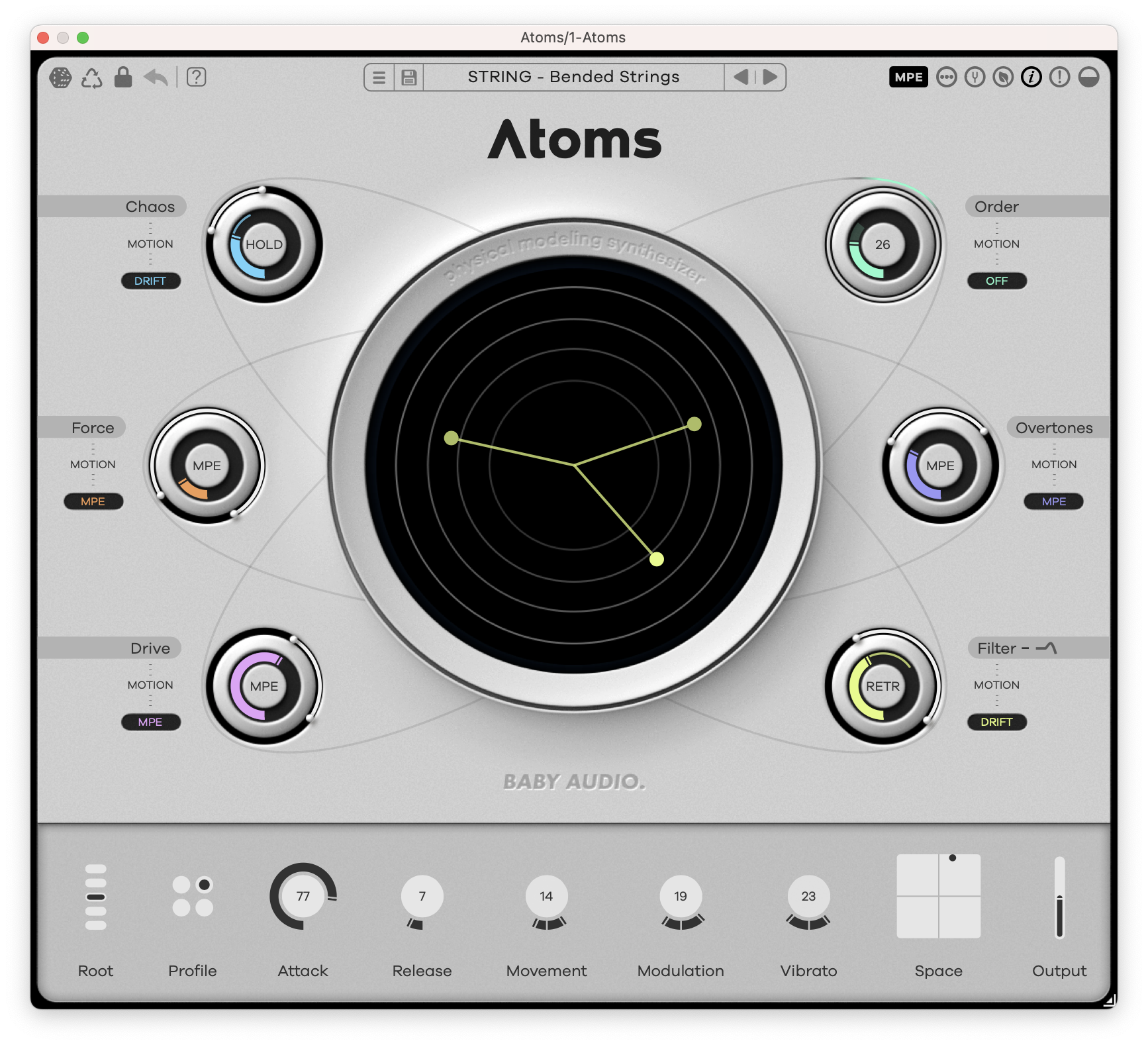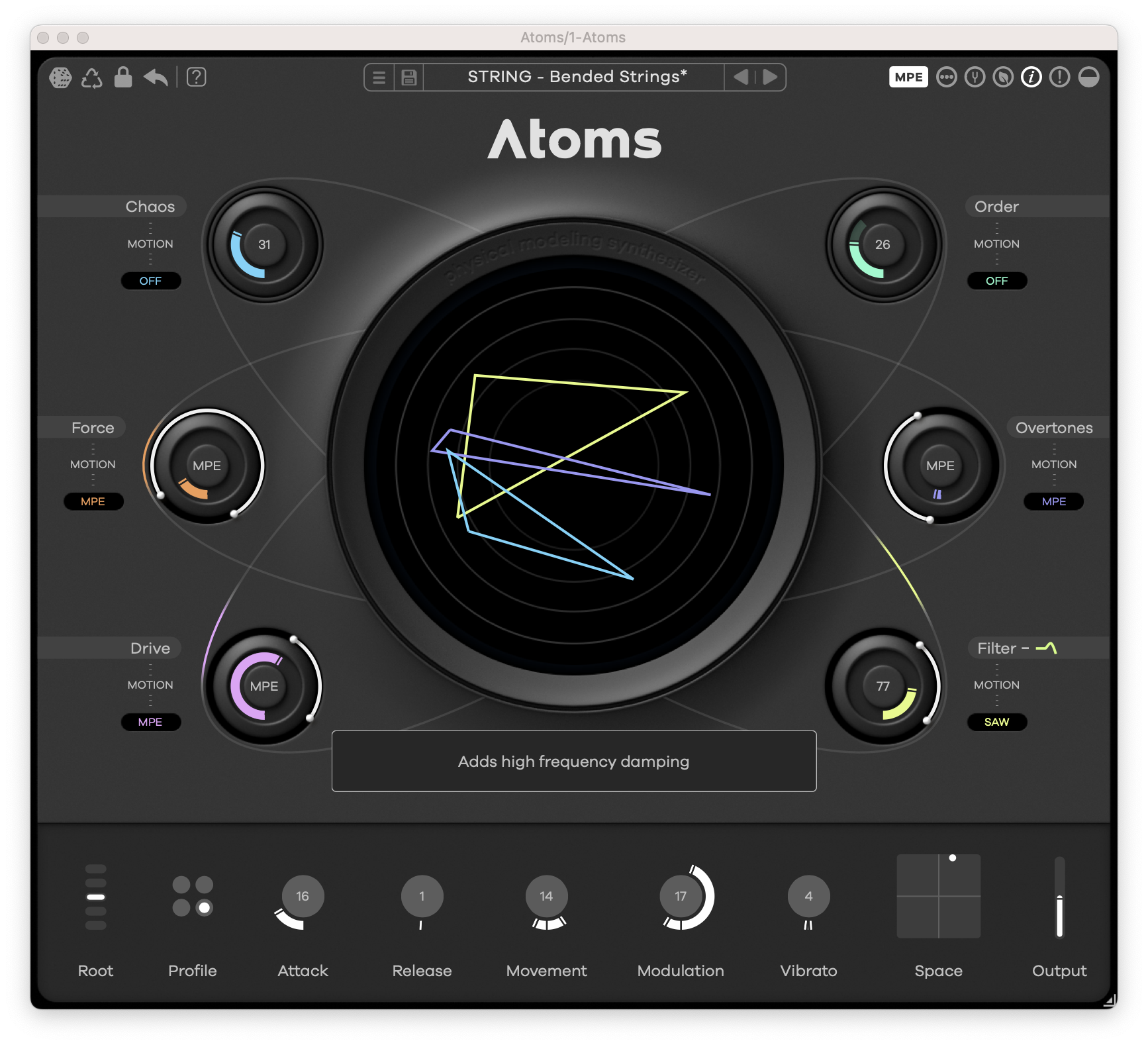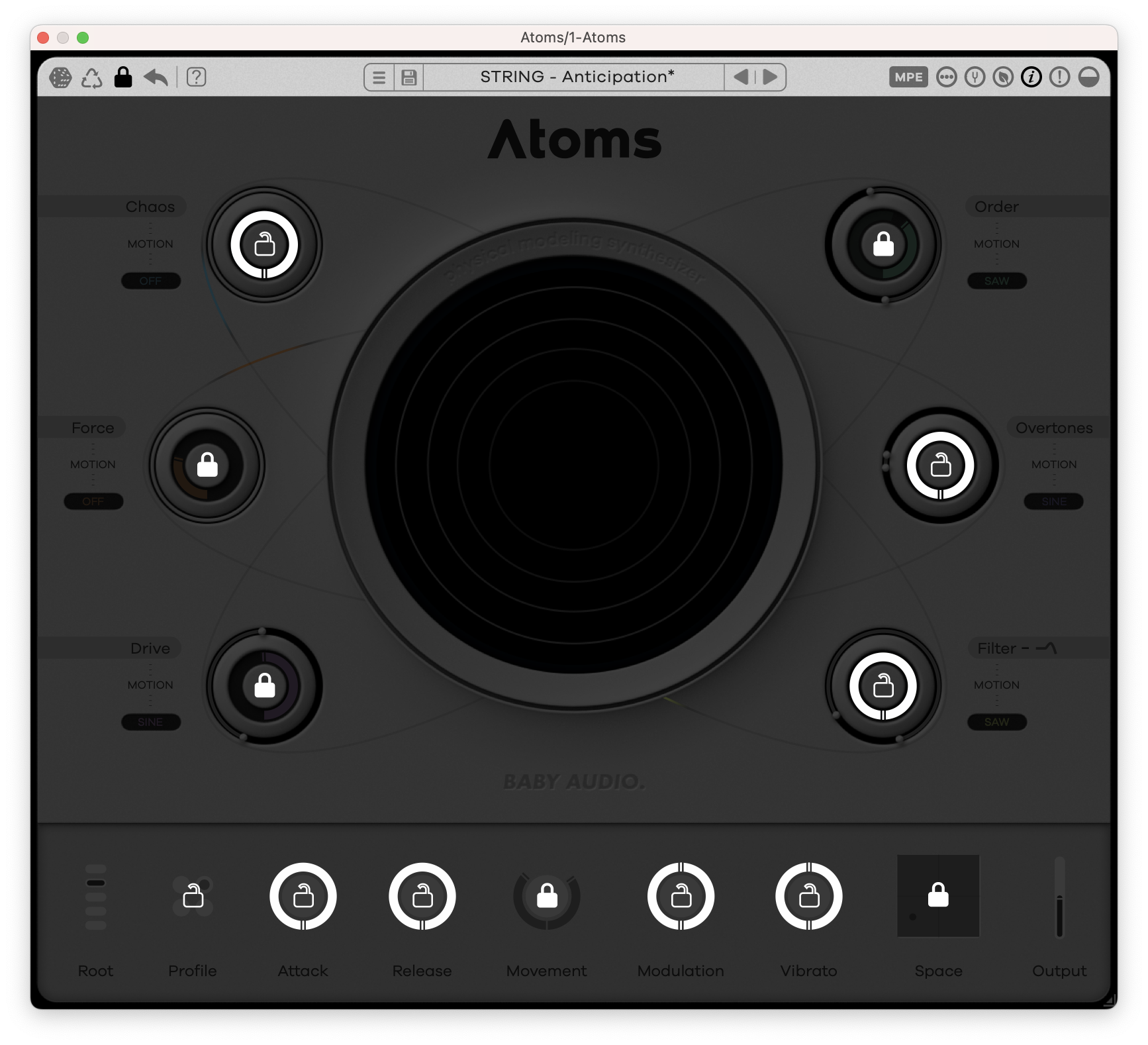Baby Audio Atoms Review
- February 15, 2024
- by Dan Brashaw
- Product Intelligence Report
Baby Audio first entered the software synthesiser market with last year's impressive BA-1, a recreation of Yamaha’s battery-powered CS01 – you can read Steve Castellano’s review on our blog. This year, the developers of Transit, Crystalline and Smooth Operator are back with another instrument, and this time it’s totally original.

Atoms is a physical modelling synthesiser designed to generate “an endless variety of organic and otherworldly sounds”. It’s available in VST, AU, and AAX formats, and is currently available at an intro price of $59 (regular price $99). It has a pretty interface, intuitive controls, and importantly sounds great – let’s take a closer look.
Don’t judge a synth by its cover
Baby Audio is known for its simplistic, pretty plugin designs, and Atoms is no exception to that rule. Packaged in either grey or black (users can switch between the two colours at the push of a button), Atoms has its six main parameters arranged around a central atom-styled visualiser. Coloured “electrons” whizz around the interface and as you play the visualiser lights up with pleasing dots and lines.
However, the look is also practical. The interface of Atoms is simple and intuitive. The six main parameters may at first glance appear to be single-knob controls, however, dig a little deeper and you’ll discover that each has independent modulation controls built in.
You can alter modulation range and shape on a per-parameter basis, and choose from sync, free, retrigger and hold LFO modes.
A supernatural sound
Physical modelling synthesisers are designed to simulate physical sound sources. Normally they involve an agitator such as a hammer or finger interacting with an object such as a plate or string.
Atoms simulates the sound of a bow exciting a series of masses and strings – however, Baby Audio has designed the synth to push the boundaries of reality, creating sounds that are “beyond what’s possible in the natural world.”

The synth certainly achieves this. Browsing through the presets will give you an idea of the wide range of sounds this instrument is capable of. Atmospheric pads, punchy basses, and even percussive sounds are all achievable with Atoms.
Despite the wide range of types of sound the synth can be used to craft, every patch does have a distinctive “Atoms” feel. Thanks to its physical modelling algorithms, sounds created with this instrument feel alive and organic, even when they’re veering into the odd and otherworldly.
You won’t achieve clean sine bass or aggressive supersaws with Atoms, but you will find yourself creating patches that don’t quite sound like anything you’ve heard before.
Controlled chaos
Thanks to its randomisation feature, Atoms can be used to quickly build unexpected patches. There’s a global randomise button which enables you to randomise almost every parameter in the synth.
This is quite standard for creative synths like this, however, Atoms takes it a step further by giving users the power to lock any parameter they like, and then randomise the remaining unlocked parameters.

This well-designed feature means you can quickly build out interesting patches with control and intention rather than repeatedly rolling the dice and hoping for the best.
There is also an interesting variation button. Clicking this creates a new take on your current patch. It won’t change the fundamental sound of what you have built, but will instead create a variation on it, allowing you to explore potential new sounds without straying too far from what you have.
Simplicity is great, but could limit you
The simplistic, easy-to-use interface of Atoms makes it a quick and fun synth to use. It’s beginner-friendly, and pros will enjoy using the synth for quick sound design results. However, synth heads who are into meticulous tweaking, in-depth mod matrices and vast arrays of sound sources won’t find what they’re looking for here.
The filter is not multi-mode – the only filter type is low pass. You can boost the filter’s resonance, but you don’t even have the option to adjust the slope.
Likewise, the envelope in Atoms is quite limited. Rather than a full ADSR envelope, users only have the option to adjust the attack and release.
It would have been nice to see more options provided for these two elements. Their inclusion would elevate Atoms to more of a power user product.
However, not having these more in-depth usability features does not detract from Atoms’ creative, simple and fun user experience and the great-sounding patches that can be built with it.
The cherries on top
Along the bottom of the Atoms UI, you will find a few effects parameters which allow you to personalise the synth’s sound further.
The Profile control gives you four different profiles – Standard, Inharmonic, Alternative and Lo-Fi – to choose from. Each adds a different character profile to Atoms. This style of effect is one that can be found in other Baby Audio’s delay reverb hybrid effects unit Spaced Out. It’s a quick, unique way to mix up the character of a patch whilst retaining the key parameter settings.
Additionally, the bottom of Atoms’ UI is also host to a reverb X Y pad. This is a well-designed, room-efficient way to add some space to your patches. Again, those looking for maximum sound design control may find the lack of reverb types and EQ limiting, but for quick, lush-sounding verbs this solution works well.
A great addition to most collections
Atoms would be at home in the plugin folder of almost any producer, and at the intro price of $59, it is very easy to recommend. It’s fun and intuitive to use, looks pretty, and most importantly sounds excellent. It’s also unique – it’s unlikely you will have a similar-sounding synth in your collection already.
However, as previously mentioned, this isn’t for those looking for a highly tweakable physical modelling synthesiser with in-depth control. As with most Baby Audio products, Atoms is about creativity, sound design and fun. If that’s what you want from a synth then look no further.
Latest Music Software ReviewsAuthor

Dan Brashaw
Dan Brashaw is a producer and writer based in Bristol, UK. He releases dance music under the moniker Skeleton King, and his music has been released on Lobster Theremin, Fantastic Voyage and Breaks 'N' Pieces. His writing has been published in DJ Mag, Electronic Musician, and via a multitude of online outlets.